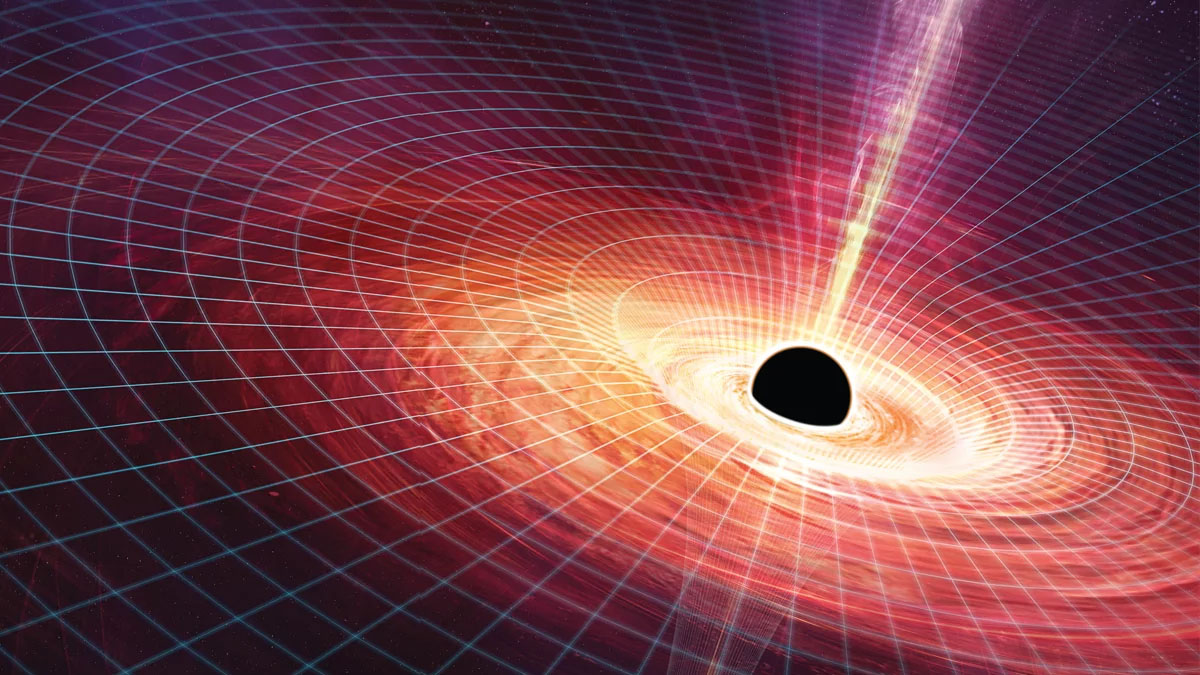mining physics for “groundbreaking” papers

Black holes are immensely fascinating cosmic phenomena. They’re not even objects but places where much of what we know about physics is put on its head, twisted forward, backwards, sideways, blended together in nearly infinite quantum states, spat out, and then sucked back into violent maelstroms of pure self-gravitating energy in a display of the bizarre and amazing things nature can concoct when given enough time. And since they’re such an exciting topic, plenty of time has been spent on research into their structure, especially when it comes to their incredible energy densities since their singularities are thought to have the potential to behave like the initial pre-Big Bang conditions of the universe. Pursuing this route, physicist Nikodem Poplawski had another look at a rather old idea about what goes on in the event horizon of black holes and whether they can do something as amazing as set in motion the birth to entire universe in its own branch of time and space.
The basic premise goes something like this. Black holes build up an immense energy density somewhere in the event horizon until something snaps and the energetic bubble explodes. Trapped in the black hole, it won’t escape as a blast of radiation but instead, tear out a new space-time bubble which will expand into a universe in its own right. Not only that, but the mechanics of the event will actually set time in motion for a newly hatched cosmos. And all we need to do to show how this would happen is to make a slight adjustment to the theory of general relativity as we know it, substituting it with the Einstein-Cartan-Kibble-Sciama gravitational framework instead and work with an 8-dimnsional space-time according to which there are no singularities at the cores of black holes, and torsion fields, the repulsion between spinning fermions like protons and electrons, govern the dynamics of hyper-compressed matter. So just use a different derivative of general relativity, make several sweeping assumptions about the interiors of black holes, and presto, you’ve got a new universe. You won’t be able to see it or detect it, since it’s in its own realm, but it would be there, expanding outwards at superluminal speeds thanks to the energy of torsion fields being released from an above-Plank density.
Now is it just me, or is there a recent craze on arXiv in publishing papers with the general formula of taking an established concept, tweaking the math with a few assumptions and alternative cosmological models, giving a sweeping set of implications from the resulting blizzard of equations, then calling a long standing mystery settled? The big problem with all these papers is their lack of falsifiability. Yes, they certainly do make serious and factual predictions, but we simply can’t examine them because they take place in manifolds of space and time that we can’t really access, or require feats of engineering that would be absolutely impossible in order to tackle the authors’ main idea. For example, a paper describing how to test the cosmic censorship hypothesis calls for over-spinning a black hole until it reveals its singularity. This is a very dubious idea at best and it requires us to get to a black hole with a few solar masses worth of matter to accelerate to the nearly the speed of light to really test. Another paper on counting universes in a multiverse actually gives up on defining how we can test its conclusions when it tries to arbitrarily cap the number of universes we can see. If we could detect them that is. And Poplawski is in the same boat here, requiring us to see the birth of new universes inside the event horizon of black holes. Which, by the way, he says we actually wouldn’t be able to see.
The result of this approach is a paper which basically piles assumption onto assumption, factors in a minute amount of the details involved, and results in a purely speculative exercise which is then trumpeted by news wires and blogs as some great insight into the nature of the universe. After a short while the sensationalism gets rather old and is really big on listing implications while only briefly mentioning how we would actually try to go about testing the hypothesis itself, usually leaving it at a cryptic phrase that some property should have a measure of X and if we somehow detect it, it could provide experimental evidence for the paper’s conclusions, although just a few measurements here and there are an awfully shaky premise on which to build our entire cosmology. I’m all for being open-minded, but please show me something more than fancy math and give an experimental setup which could be replicated in a lab or have a big enough effect on space and time for a big enough team of astronomers to find some sort of pattern in their observations. It’s fun to be esoteric dreamers every once in a while but eventually scientists have to produce actionable papers rather than press and blog- friendly “overturning the current paradigm” collections of complex equations.
See: Poplawski, N. J. (2010). Cosmology with torsion — an alternative to cosmic inflation, arXiv: 1007.0587v1





